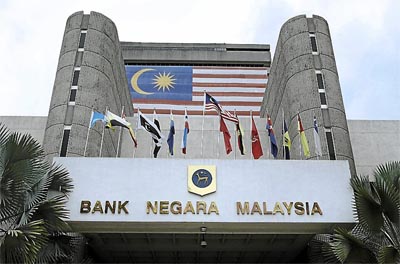y Maybank Investment Bank Research

It has been speculated that Bank Negara is studying the risks arising from DIBS with a view of potentially imposing curbs on it.
ASSUMING the developer interest bearing scheme (DIBS) is curbed, we estimate the worst case scenario to be a marginal 0.7 percentage points (ppt) shave off our 2014 industry loan growth forecast of 10.5% to 9.8%.
We believe domestic banks have been more tempered in their exposure to the mortgage segment and channel checks point to limited exposure at this stage. We maintain our industry loan and earnings forecasts for the individual banks for now.
Speculation has it that Bank Negara is looking to curb the DIBS. General guidance is that such loans have made up 15%-20% of new mortgage loans over the past few years and thus some dampening effect is to be expected.
Nevertheless, we believe the impact is likely to be contained by the fact that housing loan growth of the Big 6 banks has been measured and such loans account for less than 5% of total residential loans for the big banks.
Assuming DIBS loans account for 20% of new mortgage loans, we estimate the worst case impact to be a marginal 0.7-ppt decline in our 2014 industry loan growth forecast to 9.8% from 10.5%.
While industry housing loan growth rose 13% year-on-year (y-o-y) in 2011 and 2012 respectively, housing loan growth for the Big 6 banks rose 14% y-o-y in 2011 and at a more measured pace of 10% y-o-y in 2012, with foreign banks picking up the slack in 2012.
Public Bank continues to be the most aggressive in the market, with growth of 17% y-o-y in 2012, but with stringent controls, we understand that DIBS loans make up less than 2% of its mortgage book and that it has been very selective about which developers it ties up with for this scheme.
Based on our channel checks, AMMB (2-year housing loan compounded annual growth rate of 6%) has shied away from the property sector for several years while DIBS loans account for about 1%, 2% and 5% of CIMB’s, Maybank’s and RHB Cap’s mortgage books respectively.
Any move to curb the DIBS would be aimed primarily at further curbing speculative activity in the property market. To be fair, measures to date such as the raising of the loan-to-value (LTV) ratio in 2010 and a hike in real property gains tax in January 2013 have had some success.
Bank Negara had highlighted in its 2012 Financial Stability and Payment Systems Report that ever since the imposition of a LTV ratio of 70% on individuals with more than two housing loans, the annual growth in lending to such individuals had declined sharply to 14.5% y-o-y in November 2010 to 1.9% y-o-y in December 2012.
Individuals with multiple housing loans made up less than 3% of total housing loan borrowers and their borrowings accounted for 13.7% of outstanding housing loans.
Source : Maybank Investment Research, June 27, 2013

